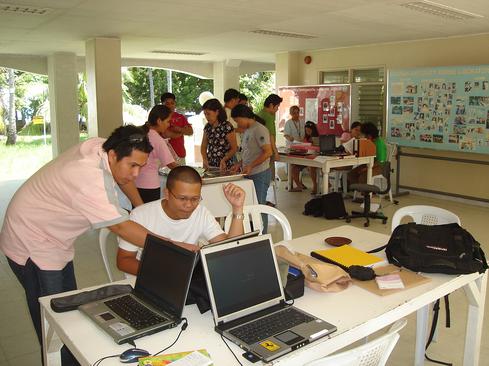Rather than take responsibilities away from the CIO, companies should create this new position to help the CIO cement strategic relationships with other divisions.

We've been hearing for decades that IT must "align with the business," that CIOs must form true partnerships with their peers in marketing, finance, HR, and other disciplines. So why do we continue to see new roles and titles emerging (chief digital officer, chief innovation officer, chief data officer, etc.) that co-opt part of the CIO's strategic responsibilities?
Here's the challenge for CIOs: While the average marketing or finance executive doesn't have to become an expert in a range of disciplines, the CIO is expected to develop a fluency in all of them. And this is too daunting a responsibility for any single individual.
Rather than take strategic responsibilities away from the CIO, companies should consider creating a new position -- or new class of positions -- that helps the CIO establish and cement a more strategic relationship with other divisional leaders. That position is business information officer, or BIO.
In my new book, Implementing World Class IT Strategy: How IT Can Drive Organizational Innovation, I profile a number of top CIOs who have done just that, typically appointing several BIOs who operate in concert. Among them are the CIOs of Best Buy, BJ's, Capital One, Kaiser Permanente, New York Life, PNC, SAP, Siemens, and World Fuel Services. Although each company has incorporated unique nuances into the role, there are common characteristics.
[Explore the benefits of private clouds. Read Private Clouds Come Down To Earth.]
BIOs tend to spend almost equal time working in and thinking about IT and the other division in which they're embedded. They often report to the CIO but have a dotted line into the head of the non-IT division. They participate in the strategy sessions of each.
If they come from the IT organization, they quickly acquire a working knowledge of the non-IT discipline to the point where they can ask questions and develop insights on a par with the leaders of those functions. That doesn't mean they have deeper expertise, but they tend to be autodidacts who learn quickly.
BIOs often come from the IT org, but they're just as likely to be tech-savvy leaders from outside of IT. Either way, they must be advocates of each department and discipline, with a deep understanding of IT's capabilities and the needs of the other division. They think creatively about how to push for new, innovative technology solutions, but they're keenly aware of re-using the company's embedded technologies wherever possible. They adhere to and drive standardization while remaining open to new investments where they're warranted. They retain the right to say no, but they're much more geared to say yes, or at least "yes, but..."
The BIO profile also includes:
A high-level of emotional intelligence, and an ability to work with and influence a diverse set of constituents
An ability to understand, reengineer, and at times run processes across an entire enterprise
A focus on speed to market
A sensitivity to the cultural norms of the IT organization and the other division in which they're partially embedded
Enough expertise to earn the respect of the business discipline's people and be able to push back
An ability to listen carefully and articulate a blueprint for the business and IT future-state
The main advantage of instituting the BIO role is that it brings IT into the conversation about needs and plans as they're conceived. BIOs must be able to help shape the conversation, push the non-IT division to prioritize, and ensure that the IT organizations doesn't develop a reputation for biting off more than it can chew.
The BIOs aligned with the different divisions should network regularly with one another to identify common needs as well as contradictory directions. They should also collaborate regularly with the enterprise architecture team, ensuring that new ideas are assessed within the context of business, data, application, and system architectures.
With growing responsibilities and escalating expectations placed upon CIOs, they need help, not a new C-level peer and turf battle. The BIO can be a critical role.
Cloud Connect (September 29 to October 2, 2014) brings its "cloud-as–business–enabler" programming to Interop New York for the first time in 2014. The two-day Cloud Connect Summit will give Interop attendees an intensive immersion in how to leverage the cloud to drive innovation and growth for their business. In addition to the Summit, Interop will feature five cloud workshops programmed by Cloud Connect. The Interop Expo will also feature a Cloud Connect Zone showcasing cloud companies' technology solutions. Register with Discount Code MPIWK or $200 off Total Access or Cloud Connect Summit Passes.
About the Author(s)
You May Also Like







